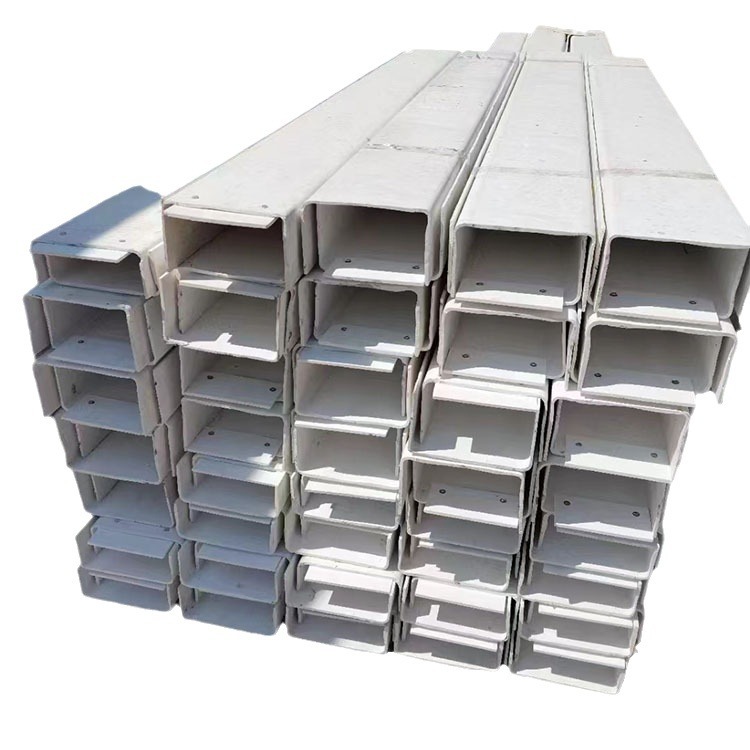- Home
- »
- Fibergrating's Blog
- »
- Why is Low Maintenance Solution for Fiberglass Beams?
Table of Contents
Low Maintenance of Fiberglass Beams
Fiberglass beams have gained significant popularity in recent years due to their numerous advantages over traditional materials like steel and wood. These beams are lightweight, resistant to corrosion, and boast a high strength-to-weight ratio, making them ideal for a variety of applications. However, like any material, fiberglass beams require proper care to ensure longevity and optimal performance. This article will explore the maintenance requirements of fiberglass beams and how they offer a low-maintenance solution for diverse construction projects.
Corrosion Resistance: Keeping Fiberglass Beams Clean
One of the major advantages of fiberglass beams is their resistance to corrosion. Unlike steel beams, which can rust and weaken over time, fiberglass beams are impervious to moisture and chemicals. This makes them an excellent choice for environments where corrosion is a concern. To maintain this corrosion resistance, it is crucial to keep the beams clean and free from debris. Regular inspections should be conducted to identify any signs of damage or wear, such as cracks or abrasions, which can compromise the structural integrity of the beams.

Fiberglass Beams' UV Protection: Shielding from Sunlight
Another benefit of fiberglass beams is their minimal maintenance requirements compared to wood. Unlike wooden beams, which can rot and attract insects, fiberglass beams are resistant to both decay and insect infestation. However, prolonged exposure to direct sunlight can cause the material to degrade over time. To prevent this, it is advisable to apply a UV-resistant coating to the surface of the beams. This coating helps protect the beams from the sun’s harmful rays and prolongs their lifespan.
Fiberglass Beams' Thermal Stability: Managing Temperature Fluctuations
Fiberglass beams are also known for their low thermal conductivity, meaning they are less likely to transfer heat compared to materials like steel or aluminum. This property makes them suitable for applications where temperature fluctuations could cause expansion and contraction, leading to potential structural issues. To maintain thermal stability, it is essential to ensure that the beams are adequately insulated and protected from extreme temperature changes.
Fiberglass Beams Application-Specific Considerations: Tailoring Maintenance
In addition to these general maintenance requirements, it is important to consider the specific application and environment in which the fiberglass beams will be used. For instance, if the beams will be exposed to harsh chemicals or corrosive environments, using a more robust fiberglass material or applying additional protective coatings might be necessary. Similarly, if the beams will endure high levels of mechanical stress, reinforcing them with additional support structures or using thicker walls may be required.
Conclusion: A Durable and Reliable Solution
Fiberglass beams offer a low-maintenance solution for various construction projects due to their corrosion resistance, low thermal conductivity, lightweight nature, and non-conductive properties. However, it is essential to consider the specific application and environment in which the beams will be used and take appropriate measures to ensure their longevity and performance. By adhering to these maintenance guidelines, fiberglass beams can provide a durable and reliable solution for a wide range of construction projects.

Comments
Frequently Asked Question
Fiberglass beams require minimal maintenance compared to traditional materials like steel and wood. Key maintenance tasks include:
- Keeping the beams clean and free of debris to maintain corrosion resistance.
- Regularly inspecting for signs of damage, such as cracks or abrasions.
- Applying a UV-resistant coating to protect from prolonged exposure to direct sunlight.
Fiberglass beams are highly durable due to their resistance to corrosion, rot, and insect infestation. Unlike steel, which can rust, and wood, which can decay, fiberglass beams maintain their structural integrity in various environments. They also have a high strength-to-weight ratio and low thermal conductivity, making them suitable for a wide range of applications.
Yes, the application and environment in which fiberglass beams are used can influence their maintenance and performance. For example:
- In corrosive environments, using more robust fiberglass materials or applying extra protective coatings is advisable.
- In settings with high mechanical stress, reinforcing beams with additional support or using thicker walls might be necessary.
- For outdoor applications, ensuring adequate UV protection is crucial to prevent material degradation.
Apart from low maintenance requirements, fiberglass beams offer several other benefits:
- They are lightweight, simplifying the installation process and reducing labor costs.
- Fiberglass beams are non-conductive, making them safe for use in environments where electrical insulation is important.
- Their low thermal conductivity helps manage temperature fluctuations, reducing the risk of expansion and contraction-related structural issues.
